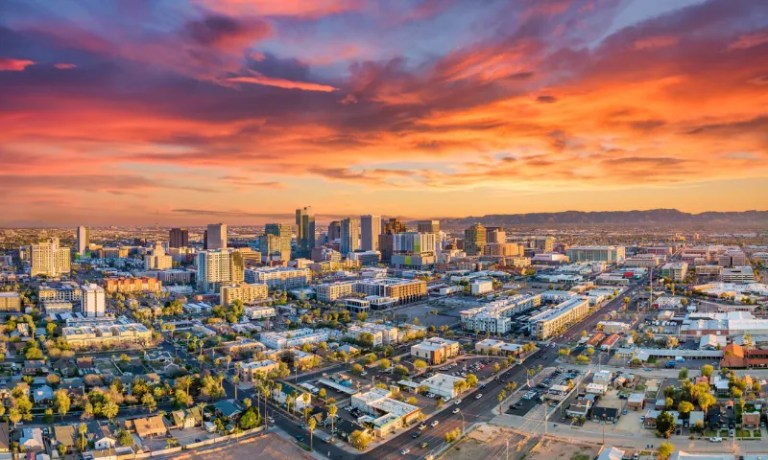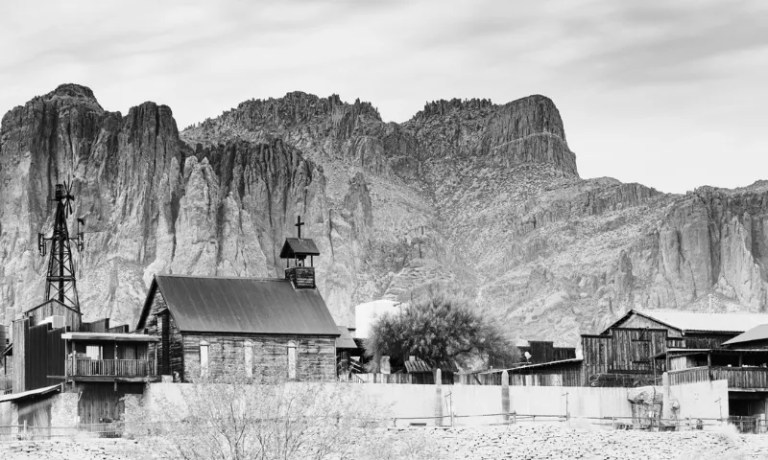The real cost of bottled water.
See how our bottleless water coolers compare.
Areas served
Offer a more sustainable solution for cleaner, better-tasting water on demand.
Fast, efficient, and reliable ice and water machines with advanced filtration.
Bottomless bubbles with built-in filtration for your modern workplace.
Better water makes better coffee. Give your people great-tasting coffee from best-in-class brewers.


Today, Phoenix’s water supply comes from three surface water sources: Theodore Roosevelt Lake, the Verde River, and the Colorado River. One of five treatment plants disinfects water with chlorine before delivering it to consumers. According to the Phoenix Water Quality report, water that passes through treatment systems may still contain small amounts of microbial, inorganic, chemical, and radioactive contaminants. In addition, algae that grow in the canals during the late summer and fall can cause a “musty” odor and taste in Phoenix tap water.
The desert topography produces higher levels of sediment and minerals, like calcium, magnesium, arsenic, and chromium in drinking water. These elevated mineral levels can lead to corrosion of the copper piping, lead solder, or brass fixtures of service lines, leading to elevated copper and lead in the Phoenix tap water. Many residents install reverse osmosis (RO) filtration systems to reduce total dissolved solids and mineral content in their water.
Early settlers of Phoenix knew the importance of proper water management living in a desert landscape. While seasonal rainfall and runoff from mountain snowmelt provided “eight months of heaven,” the undependable summer season would mean “four months of hell.” To solve the issue, settlers drilled wells to provide two million gallons of groundwater per day. These wells often ran dry during the summer. Urban developer, Jack Swilling, found a solution from ancient irrigation canals of the Hohokam Indians. He reconstructed these canals to deliver water from the local Salt River to the city throughout the year.
To contend with seasonal flooding and droughts, President Theodore Roosevelt’s National Reclamation Act of 1902 authorized the construction of several dams, including the Roosevelt Dam. While the Roosevelt Dam stored enough water for the residents of the Phoenix area, many complained that the water, fed by the Salt River, tasted salty. Phoenix turned to a source of surface water fed from pure snowmelt and rainwater. The Verde River met these qualifications and construction began on a 30-mile redwood pipeline from the Verde River to Phoenix. Within 10 years, a concrete pipeline and a 20-million-gallon reservoir were built to replace the redwood pipeline along with the construction of several dams and reservoirs. In 1968, the Central Arizona Project was enacted to bring water from the Colorado River to Phoenix.
See how our bottleless water coolers compare.
Talk to an Phoenix Culligan Quench water expert to find the best water solution for your space.
Backed by 85 years of Culligan expertise, Culligan Quench has focused exclusively on providing businesses with the highest quality filtered water. This commitment to doing one thing well has made us the trusted water authority for over 75% of the Fortune 500. We offer the best bottleless water coolers, ice machines, sparkling water dispensers, and coffee brewers to fit any workplace. No matter your location, company size, or industry, we have a filtered water solution that is right for you
Play videoProudly providing businesses with clean, filtered drinking water in the greater Phoenix Metro Area.
| Mon: | 8 AM – 8PM |
| Tues: | 8 AM – 8PM |
| Wed: | 8 AM – 8PM |
| Thur: | 8 AM – 8PM |
| Fri: | 8 AM – 8PM |
| Sat: | Closed |
| Sun: | Closed |
According to The Phoenix Water Services Department, about 98% of Phoenix’s water supply is surface water created by mountain snowmelt. The Salt River Project delivers nearly 60% of this water from the Salt and Verde Rivers, while the Central Arizona Project delivers about 40% from the Colorado River. Only about 2% of the city’s supply comes from groundwater.
To ensure an adequate water supply during droughts, Phoenix also banks excess water in underground aquifers. It can then be pumped up to meet the city’s demand during dry spells.
Yes, Phoenix tap water meets or exceeds all state and federal health and safety requirements, with oversight by the Environmental Protection Agency and state regulatory agencies. Each year, municipal treatment plants and distribution systems perform more than 5 million tests on the water supply, including tests for contaminants, to ensure it’s safe to drink. Before reaching city residents, the water supply is also disinfected with chlorine.
Phoenix residents may notice harmless taste and odor variations, particularly during the autumn months. These can be easily controlled using an advanced water filtration system in your business.
Over 120,000 companies, big and small, trust Culligan Quench for cleaner, safer, and great-tasting water.
"Solid 5 star rating for Quench-Phoenix from me.
Ready to upgrade
your water?Get matched with the best water, ice, sparkling water or coffee machine for your workplace.
Take our quiz